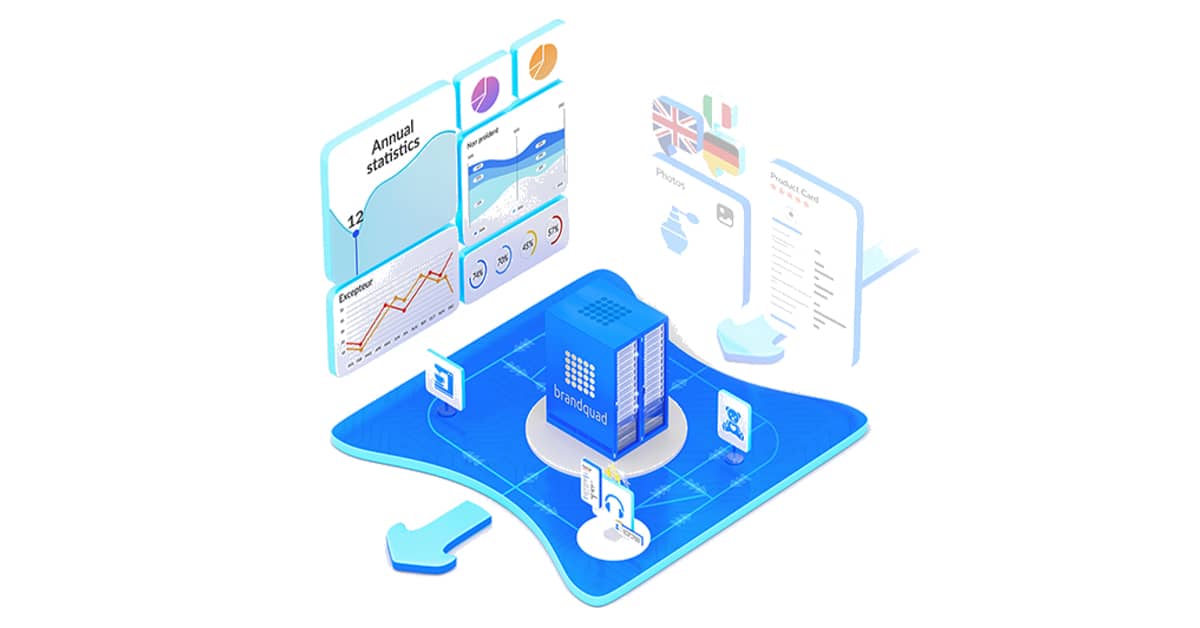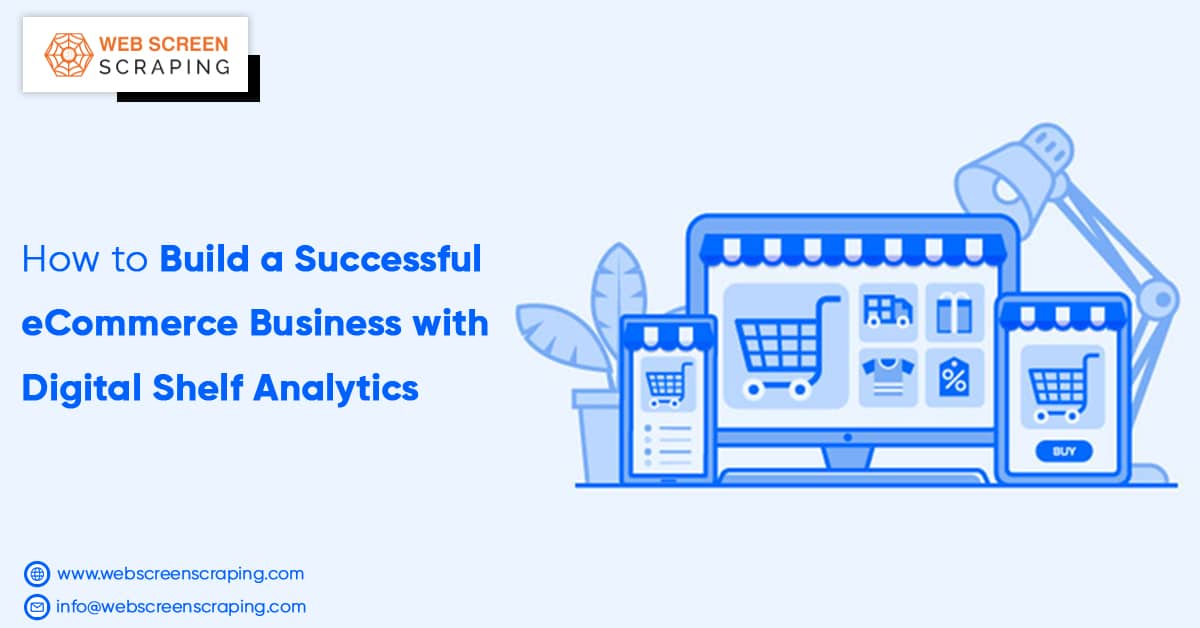What is Digital Shelf Analytics?

Imagine you're walking down the aisle of a big supermarket with countless products. Each product has a different brand, size, price, and placement on the shelf. It can be overwhelming to navigate and choose the best product for your needs. That's where digital shelf analytics comes in. It's like having a virtual shopping assistant. The VA can help you sort through all the product data and recommend the best products. It uses advanced technology and algorithms to organize and analyze data. The data includes pricing, reviews, and placement on e-commerce websites. By leveraging this data, it can identify trends, patterns, and insights. The process can help businesses optimize their product listings and improve sales.
Digital Shelf Analytics process uses technology and algorithms to analyze large amounts of data. Along with this, it also organizes the data. This process allows businesses to gain better insights into eCommerce online data and make informed decisions.
It is like having a helpful shopping assistant. Just like the assistant, digital shelf analytics can provide customized recommendations. These recommendations are specific to your needs and preferences. With the help of Digital Shelf Analytics, businesses can identify the products that are selling well. They can also recognize the ones they need to restock and those that need better visibility. In a nutshell, Digital Shelf Analytics is like having a smart and tech-savvy assistant. It can assist you to make better decisions and find the products that meet your needs.
The Importance of Digital Shelf Analytics for eCommerce

For eCommerce businesses, Digital Shelf Analytics is like having a superpower. It will let them track and analyze every aspect of their store's virtual shelves. It includes the placement of products, pricing, customer reviews, and availability.
eCommerce businesses can leverage this information to optimize their online shelves. It will result in them maximizing sales and customer satisfaction. For instance, they can identify popular products and adjust their placement. It will increase visibility and allow them to analyze customer reviews. The next step would be to identify areas for improvement and then amend their offerings.
Digital Shelf Analytics is a crucial step in the eCommerce business. It allows brands to replicate their in-store shopping experience virtually. They can drive sales and customer loyalty better. The power of digital shelf analytics makes businesses confident in the digital marketplace.
Digital shelf analytics is significant for eCommerce businesses because it helps them to:
- Optimize product listings
- Improve pricing strategies
- Enhance customer experience
- Increase sales
eCommerce businesses looking to stay ahead of their competition can rely on Digital Shelf Analytics to get an edge. They can use this powerful tool to succeed in the ever-changing digital marketplace. DIGITAL SHELF ANALYTICS will give valuable insights for businesses to make data-driven decisions. Based on this, they can drive sales and enhance their customer experience.
What features to analyze?
Today, digital shelf analytics tools are becoming popular. Rightly so, as they can analyze tons of data in real time. These tools analyze ratings and reviews along with aggregated feedback on new products. They also analyze promotional data. It helps in understanding how campaigns are performing in peak hours or otherwise. Besides, digital shelf management tools can also analyze products, pricing, and coverage. They use geo, search data, completeness by a retailer, and average product completeness. For eCommerce brands, the following are a few of the most crucial metrics to consider –
- Traffic
- Conversion rate
- Ratings
- Content compliance on titles, images, and descriptions
- Number of sellers per marketplace
- Cart abandonment rate
- Share of search
It will be a good idea to check the data points in real time or a specified period to be more efficient. But this will rely on what matric you are analyzing.
Real-time data
A few digital shelf metrics need quick responses. It is to make the most of the opportunities they present. Picture this - a very popular rival runs out of stock on Amazon, and you have hours or a few days to take advantage. If enough people check this rival out on Amazon, you can pitch sales every minute!
Changes over time
You can spot trends by carefully analyzing metrics over time. It is something that can get overlooked in real-time data. Imagine you have a thousand reviews for your product, and you get a single batch of one-star ratings. In this case, your overall ratings will not get affected. But, if your ratings are consistently low for a few weeks, then there are issues to address and solve quickly.
How to make the most of Digital Shelf Analytics?
To make the most of Digital Shelf Analytics, you should have a strategic approach. It includes data collection, analysis, optimization, and ongoing monitoring. You can enjoy the insights gained through the process and optimize virtual shelves. You can follow these steps to prepare a strategic approach –
Define Objectives:
Define clear objectives for what you want to achieve through digital shelf analytics. Include - increasing sales, improving customer satisfaction, optimizing pricing, or reducing inventory costs.
Collect Data:
Gather as much data as possible about your virtual shelves. Think about product placement, pricing, availability, and customer reviews. You can automate data collection by using digital shelf analysis software. It makes analysis simpler and cleaner.
Analyze Data:
Understand customer behavior, product performance, and opportunities to optimize using the data. Identify trends and patterns that can inform decision-making and prioritize areas for improvement.
Optimize Product Offerings:
Use the insights gained through data analysis to optimize your product offerings. Adjust product placement, pricing, and inventory levels to maximize sales and customer satisfaction. By following these steps, you get an edge over other competitors.
Continuously Monitor and Refine:
Digital Shelf Analytics is an ongoing process that gets you meaningful insights. Based on these insights, you can track virtual shelves to refine your strategies. As a result, you will see a significant boost to your business in the virtual marketplace.
Collaborate Across Teams:
All the concerned teams that are a part of the eCommerce business must be on the same page. Thus, it is necessary to give access to these teams so they are up-to-date with the insights. It can help break down silos and improve decision-making across the organization.
Leverage AI and Machine Learning:
AI and ML help businesses analyze large amounts of data. Besides, they also aid in identifying patterns that may not be immediately visible. Consider leveraging these technologies to gain even deeper insights and drive further optimization.
Closing Thoughts
As we explored in this blog, a Digital Shelf Analytics tool can provide valuable insights that can be super beneficial. eCommerce businesses can use this to understand if there is any dip in their revenues. They can then sort of uptick in a given period. The visibility trends also offer you a chance for digital shelf optimization. It means you redirect your retail business toward expansion and growth.


